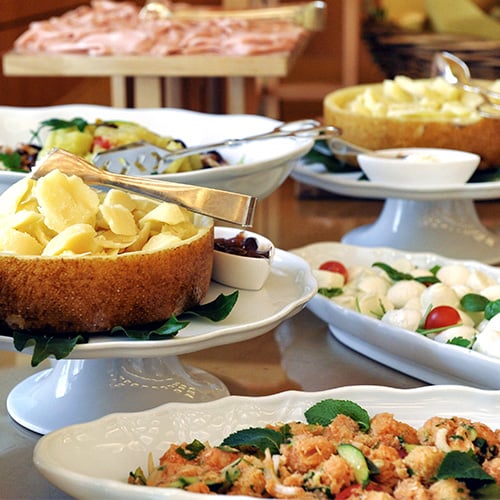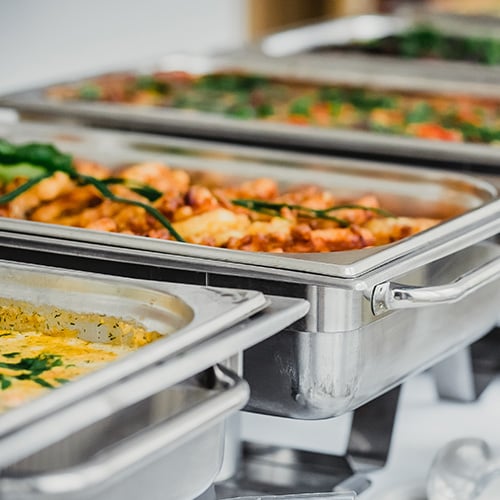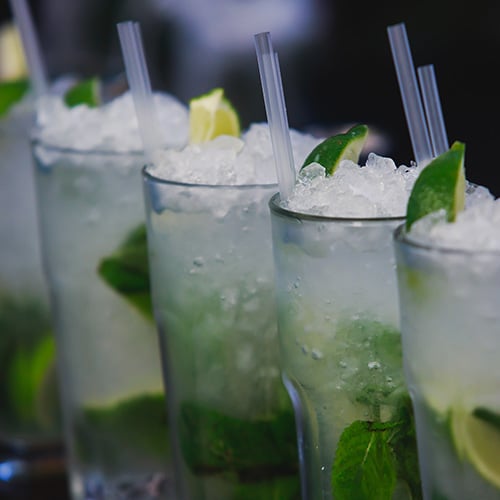
Whether you’ve just started a catering business or have been in the industry for years, your menu is essential to your success. A quality catering menu is well-planned, effectively priced, and includes a variety of unique foods. For the best results, take steps to design a diverse menu that appeals to a variety of clients. We’ll investigate how to create a catering menu and provide examples of catering recipes to feature on it below:
How to Create a Catering Menu
Creating a catering menu requires more than just selecting your favorite foods. The area you operate in, the customers you plan to serve, and the opportunities available to you can all influence what kind of menu you develop, and ingredient availability and prep times can affect your output. To create a catering menu, follow these steps:
1. Choose a Catering Style
The style of catering you choose determines how customers are served and what foods you can offer. It's important to note that your business can incorporate more than one type of catering but may have to create separate menus. The two main types of catering to choose from are as follows:
- Buffet catering: Guests serve themselves buffet-style. Stations are set up with equipment like vending kiosks supported by utility carts. This kind of catering is best for informal events like family gatherings or parties.
- Plated catering: Guests sit down and order from a menu, just as they would in a restaurant setting. This kind of catering is best for formal events like weddings.
2. Select Foods
The foods you offer should be distinct, unique, and easy to prepare for a crowd. Whether you're choosing foods based on a theme or just looking to build a traditional catering menu, there is no shortage of options available. Keep the following factors in mind to narrow your choices and create a well-planned menu:
- Balance: Choose foods and ingredients that complement one another to create a complete dining experience. For example, consider offering a selection of simple sides to accompany rich, flavorful entrees.
- Contrast: Visual appeal plays a significant role in catering. Whether you're displaying foods in a buffet setting or preparing plated meals, curate a menu that catches your guests' attention by selecting foods with contrasting shapes and colors.
- Repetition: Avoid repeating flavors in your menu selection. Make an effort to ensure each dish you serve is different from the next to give your guests more variety.
3. Price Your Menu
The price of your catering menu is determined by many factors including ingredient costs, overhead costs, and labor costs. Keep your desired profit margin in mind and observe how your competitors price their menus. When it comes time to set an official price, there are three options to choose from:
- Fixed pricing: A flat rate charged for a set amount of food.
- Tiered pricing: A variable rate that changes based on how many people you serve.
- Custom pricing: A custom rate based on a client's specific needs.
Catering Recipes
To curate a complete catering menu, offer a selection of appetizers, sides, main dishes, desserts, and cocktails. While some recipes are tried and true, it has become more common for customers to search for a unique menu concept. For that reason, your menu must strike a balance between traditional catered foods and fresh takes on popular dishes. Continue reading to learn about each section of a catering menu and what foods you should offer:
Catering Appetizers

As part of a multi-course meal, appetizers are one of the most important parts of a catering menu for two reasons: they set expectations for the menu and keep guests satisfied until their main course is ready. They can come in many forms depending on the nature of the event you are catering. Select appetizers that are visually appealing and easy to arrange for your guests. Below, we've listed some appetizer recipe inspirations for your menu:
- French onion gruyere puffs: Combine sweet caramelized onions, melted gruyere, and buttery dough with a kick of mustard to create a sensational bite-sized pastry that is perfect for pre-dinner snacking.
- Caprese salad quinoa stuffed portabellas: This crowd-pleasing appetizer features the familiar combination of mozzarella, tomato, and basil as well as nutty quinoa, fresh pesto, and roasted pine nuts.
- Thai coconut chicken soup: This unique take on chicken noodle soup features tangy ginger, coconut milk, and rice noodles.
Catering Side Dishes

A side dish is meant to balance the meal and complement your entrees. They should be visually appealing, diversify the flavor of your menu, and provide contrasting texture to your main dish. For example, if you were planning a 4th of July catering menu and offering grilled foods, you could offer baked beans as a side. We've compiled a list of side dishes to elevate your menu below:
- Three cheese mac and cheese: Use cavatappi noodles and various types of cheese such as white cheddar, yellow cheddar, and gouda to create a rich dish.
- Chipotle mashed potatoes: Combine red potatoes with spicy chipotle peppers, fresh scallions, and zesty adobo for a flavorful side option.
- Fiery jalapeno poppers: Combine jalapenos, sausage, cheese, and various spices to add a touch of heat to your side dish selection.
Catering Main Dishes

The main dish is the foundation of your catering menu. It is typically the most complex dish of the event and can feature a wide range of flavors and ingredients. When it comes to selecting a main dish, choose something that will leave guests feeling satisfied and that pairs well with the rest of your menu concept. Below, we’ll introduce some main dish options that feature a fresh twist on traditional catered foods:
- Glazed skirt steak fajitas: Add color to your menu with glazed skirt steak fajitas. These are perfect for a crowd; plate them beautifully or let your guests customize them with olive oil roasted sweet peppers and onions, chunky tomato and cilantro salsa, salty queso fresco cheese, and sour cream.
- Chipotle-maple glazed turkey: This recipe features a delicious smell and a fusion of sweet and spicy flavors. Serve chipotle-maple glazed turkey with the right wine pairing to create a memorable dining experience.
- Creamy pan-seared salmon spaghetti: Pair pan-seared salmon with spaghetti and creamy carbonara sauce to leave a lasting impression.
Catering Desserts

When executed correctly, your desserts allow you to showcase your creativity. Desserts come in many shapes and sizes, giving you flexibility as you build out your dessert selection. Incorporate intricate designs into your desserts and arrange them in eye-catching ways to improve the presentation of your menu. We’ve listed sample dessert options below:
- Black tie strawberries: Chocolate-covered strawberries provide a short and sweet ending to any meal, but this tuxedo twist is guaranteed to add elegance to any black tie affair. Use various types of chocolate to put a decorative spin on this popular dessert.
- Miniature cheesecake bites: This dessert is a bite-sized take on traditional cheesecake. Use a graham cracker crust and dip them in chocolate for extra flavor.
- Chocolate cherry cake: This rich dessert represents an excellent addition to your menu. The combination of moist chocolate cake and cherry pie filling creates a delicious and filling dish. Top the cake with cherries to improve its presentation.
Catering Cocktails

A high-quality cocktail selection can elevate any catered event. Whether you’re catering a wedding, reunion, or corporate event, cocktails are an essential part of the menu. It’s important to note that if you plan on serving alcohol at a catered event, you should verify that every guest served meets the legal drinking age and that your business has the proper licenses and permits to serve alcohol on site. We’ve compiled a list of cocktail options for your menu below:
- Peach mango summer sangria: With roots that trace back to Spain, sangria is easy to serve to a crowd. It is considered a type of punch and consists of red wine, brandy, and various fruits. By adding mango and peach, you can create a unique summertime cocktail.
- Classic mojitos: Simple and refreshing, a mojito consists of white rum, sugar, lime juice, soda water, and mint. The combination of citrus flavors and mint creates a refreshing drink that is popular with many.
- Mixed fruit daiquiris: The key ingredients in a daiquiri are rum, lime juice, and sugar. You can mix in additional ingredients like strawberry, mango, and watermelon to introduce more flavors to your drink selection.
Back to Top
The catering industry presents a significant opportunity for business owners, but without a quality menu, it can be difficult to succeed. By including unique recipes on your menu and putting a fresh twist on traditional catering favorites, you can elevate your menu and impress your guests.





